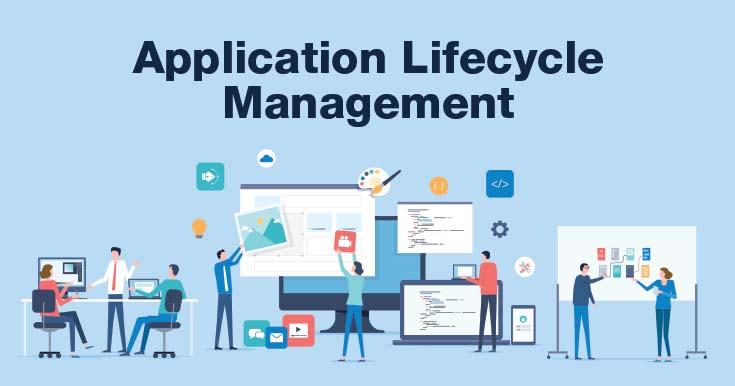What is Application Migration? Process, Benefits & Strategies

Businesses can enhance their applications by moving them to the cloud, leading to improved cost-effectiveness and scalability. However, similar to any mitigation or relocation process, application migration entails managing several critical factors. Some companies opt to engage a cloud-based application development firm to execute the migration, while others prefer to hire experienced consultants to guide their in-house teams.
In various industries, numerous teams rely on Atlassian for software development, project management, and enhancing their service teams. With the impending depreciation of Atlassian Server, scheduled for 2024, many organizations may be in a quandary, trying to figure out the when, how, and whether to mitigate their Atlassian products to the cloud.
Many companies opt to contract a cloud-based application development company for the migration process, while others prefer to engage experienced consultants to assist their in-house teams.
Many teams in different countries count on Atlassian for software development, project management, and enhancing their service teams. As we approach the upcoming end-of-life date for the Atlassian server, scheduled for 2024, your company may be facing the challenge of determining when, how, and whether to transition its Atlassian products to the cloud.
The benefits of switching from an in-house system to the Atlassian cloud are undeniably appealing. A successful move can result in a more cost-efficient, secure, flexible, and work-from-anywhere environment. However, migrating to the Atlassian cloud can be a complex and time-consuming process without the right preparation. This might leave already busy teams, especially those new to the migration process, unsure about how to get started, what resources they’ll require, and how the migration will affect their day-to-day operations.
We’ll thoroughly examine all the factors your team should think about before moving to the Atlassian Cloud in this blog. This guide will help you figure out if migration is the right choice for your team, get ready for it, execute a successful migration, and make sure the entire process goes smoothly.
What is Application Migration?
Application migration is like relocating your software applications from one place to another in the digital world. It’s moving them from one computer setup to a different one. This could mean shifting your application from one digital space to another, like moving from a public cloud to a private one or moving them from your company’s own server to a cloud service provider’s setup.
Companies do this to reap the benefits of cost savings, flexibility, and the ability to update their apps easily when they need to. It’s like upgrading to a better and more adaptable digital workspace.
Why is it Important for Organizations?
1. Cost Savings
Cloud platforms like AWS and Microsoft Azure are cost-efficient. They’re cheaper than maintaining your own infrastructure. You pay for what you use, avoiding the expense of buying and managing software.
2. Enhanced Security
Cloud applications safeguard your data even if a computer crashes or is lost. Data is accessible from any device, and security updates are handled by cloud providers.
3. Seamless Collaboration
Cloud apps enable real-time collaboration, eliminating the need for endless document emailing.
4. Scalability
The cloud easily adapts to your evolving needs. You can expand or shrink your services as your business grows.
5. Mobility
Cloud-based tools empower remote work. Access work materials from anywhere, boosting productivity.
6. Reliable Disaster Recovery
Cloud services automatically back up your data, ensuring you can resume work swiftly after any interruption. It also logs information for future protection.
These advantages make migrating to the cloud a smart choice for organizations.
Risks Involved in Migration
Moving applications isn’t without its challenges, and it’s crucial to handle them carefully for a smooth transition. Some of the common risks to be considered include the following:
- Downtime: Migration might lead to unexpected pauses in your operations, causing disruptions and affecting customer satisfaction.
- Data Loss: During migration, data can get lost or corrupted due to technical issues, human errors, or compatibility problems between old and new setups.
- Cost Overruns: Unforeseen issues can drive up costs, straining your budget and expected returns on investment.
- Performance Drops: Sometimes, moving an application to a new place can slow it down if it’s not properly optimized for the new environment.
- Security Risks: The migration process might accidentally introduce new security vulnerabilities or expose sensitive data, putting your applications and users at risk.
- Insufficient Testing: Not testing the migrated application thoroughly can lead to unnoticed errors, impacting performance, security, and user experience.
- User resistance: Users might be hesitant to embrace the migrated application, especially if they’re not well-informed or trained on the benefits and changes it brings.
- Project management complexities: Coordinating and managing all the moving parts and people involved in migration can be tricky, possibly causing delays or misunderstandings.
To tackle these issues, organizations should build a solid migration plan, do detailed assessment and preparation, allocate enough resources, perform thorough testing, and communicate effectively while managing changes.
Best Practices for Successful Application Migration
To make your application migration services go off without issues, here are some top practices:
- Assess First: Start with a deep dive into your application portfolio, including legacy systems. You need to understand how everything is set up, like your servers, network, security, and data links.
- Get Business Onboard Early: Involve all the relevant parts of your business right from the beginning. Make sure everyone knows how migration might affect them and your current processes. Good communication is key.
- Plan Your Path: Figure out why you’re moving to the cloud. Decide if you want to do it all at once or maybe start with less critical stuff to get used to it, and then tackle the more important applications.
- Governance Matters: Create a clear set of rules and plans for a secure cloud shift. This framework should define roles, responsibilities, and objectives.
- Train Your Team: Educate your employees with training sessions about cloud concepts. Ensure everyone from different teams understands the changes.
- License Check: Take stock of all your applications and understand how their licenses work in the cloud. Check with vendors to see if you can update licenses for cloud use.
- Automate Wisely: Use automation where you can to speed up the process, lower risk, and save money. It can work well with a phased approach, finding repeated patterns that can be automated over time.
- Test Thoroughly: Testing is critical. Start thinking about it right from the beginning. A migration without a good testing plan is bound to run into trouble.
Moves for Successful Application Migration
A standard application migration involves these key steps:
- Planning: Start by evaluating your applications, business objectives, and teams to devise a migration plan. Consider using third-party migration tools to help manage data transfer, provide data analysis, and monitor the process closely.
- Testing: Before actually migrating anything, practice the migration process in a safe environment. After each real migration phase, test what has moved to the new location and document the results. Frequent testing helps catch problems early and avoid data loss.
- Phased Migration: It’s a good idea to group your applications and migrate them in stages. Use project management tools to document each phase, keeping everyone, especially stakeholders, informed and maintaining detailed records.
- Post-Migration Check: After the migration is complete, conduct follow-up tests to confirm that the cloud migration plan went as planned. This involves assessing application performance, identifying potential issues, and reviewing database security.

Application Migration Checklist
When preparing for application migration, consider these factors:
- Complexity: Think about who created the application, where its documents are located, how old it is, and its significance to your network.
- Importance: Evaluate how crucial the application is for users, where it’s used (production development, testing), who’s in charge of it, and whether it integrates with other applications.
- Compliance Needs: Consider any regulatory requirements that apply to the application.
- Service Level Agreement (SLA): Determine if the application is covered by a service level agreement, which outlines performance standards and expectations.
Why Choose a Professional for Application Migration
Choosing a professional for application migration services is a smart move, especially when considering the complexities involved. At OpenAi, we understand the challenges of migrating applications seamlessly to the cloud. Our DevTools offer a range of solutions and expertise to ensure a smooth transition. With our professionals, you can rest assured that your migration will be handled efficiently, minimizing downtime and potential issues. Trust in the experts, and make your application migration a success with OpenAI’s DevTools.
FAQs
Efficient cloud migration involves thorough planning, minimal disruption, cost savings, security enhancements, and optimized performance.
Yes, you can remain on your server products if they meet your business needs and aren’t affected by product changes or discontinuation.
The cost of migrating to the cloud varies widely based on factors such as application complexity, data volume, and chosen cloud services.
Cloud offers scalability, flexibility, and cost-effectiveness, while Data centers provide more control and customization but often at higher maintenance costs.
Application migration involves moving software to a new environment, while data migration is the transfer of data between systems. They can be part of the same process but focus on different aspects of IT infrastructure.




